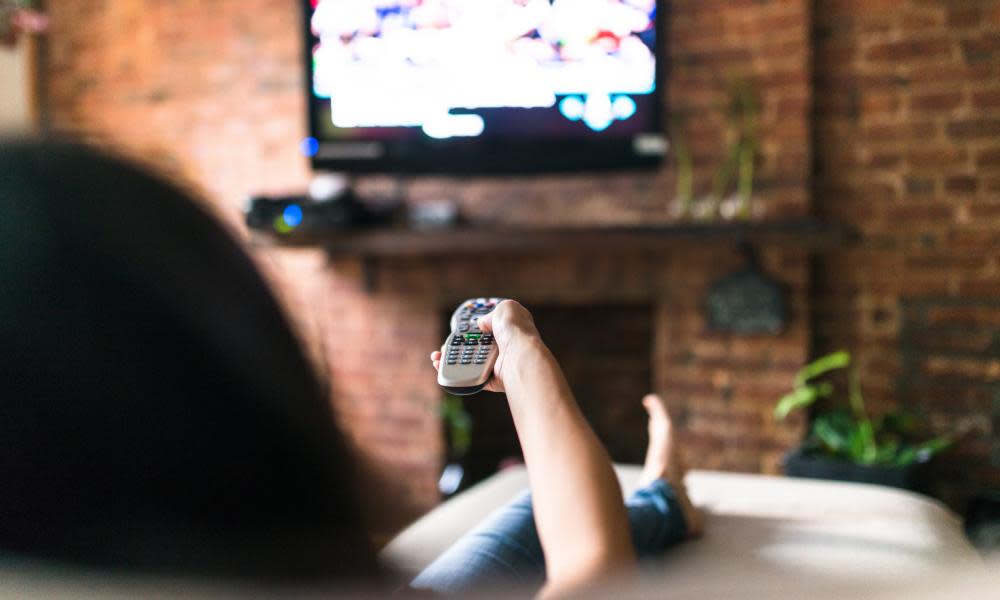Moving every half hour could help limit effects of sedentary lifestyle, says study

Moving your body at least every half an hour could help to limit the harmful effects of desk jobs and other sedentary lifestyles, research has revealed.
The study found that both greater overall time spent inactive in a day, and longer periods of inactivity were linked to an increased risk of death.
“If you sit at work all day, if you sit at home a lot, then you should be really mindful of trying to take a break from your sitting habits as often as possible – at least every 30 minutes,” said Keith Diaz, co-author of the study from Columbia University Medical Center. “Even if you exercise, you still should be mindful of taking breaks and be moving throughout the day, because exercise is not enough to overcome the risks of sitting, and sitting in long bouts.”
Writing in the journal the Annals of Internal Medicine, Diaz and colleagues from seven US institutions describe how they kitted out nearly 8,000 individuals aged 45 or over from across the US with activity trackers between 2009 and 2013.
Each participant wore the fitness tracker for at least four days during a period of one week, with deaths of participants tracked until September 2015.
The results reveal that, on average, participants were inactive for 12.3 hours of a 16 hour waking day, with each period of inactivity lasting an average of 11.4 minutes.
After taking into account a host of factors including age, sex, education, smoking and high blood pressure, the team found that both the overall length of daily inactivity and the length of each bout of sedentary behaviour were linked to changes in the risk of death from any cause. The associations held even among participants undertaking moderate to vigorous physical activity.
Those who were inactive for 13.2 hours a day had a risk of death 2.6 times that of those spending less than 11.5 hours a day inactive, while those whose bouts of inactivity lasted on average 12.4 minutes or more had a risk of death almost twice that of those who were inactive for an average of less than 7.7 minutes at a time.
The team then looked at the interaction between the two measures of inactivity, finding the risk of death was greater for those who had both high overall levels of inactivity (12.5 hours a day or more) and long average bouts of sedentary behaviour (10 minutes or more), than for those who had high levels of just one of the measures.
“We were trying to understand what is the worst feature of a person’s sitting habits – is it how many hours a day you sit, or is it sitting in these long bouts,” said Diaz. “Unfortunately the message is more mixed … it looks like both are bad for you.”
Further analysis looking at how participants split up their stints of inactivity found that those who kept most of their bouts to under 30 minutes at a time had the lowest risk of death while the team also discovered that the longer, more frequent and more intense the breaks from inactivity the better.
While the study was funded by the US National Institutes of Health and Coca-Cola, neither were involved in the research.
The latest study is not the first to probe the health impacts of prolonged periods of inactivity, but the team say their use of activity trackers is a step up as it does not rely on self-reporting, which is less accurate.
But, they note, the study does not show that inactivity causes death, and the tracker could not tell whether individuals were sitting or just standing still.
What’s more, factors such as smoking status and blood pressure were only captured once, and the activity trackers were only worn over one week, meaning that changes in the health or behaviour of participants over time was not taken into account.
Nevertheless, the team say the study underscores the need for individuals to take breaks from inactivity. “The longer the better, the more intense the better,” said Diaz.
Dr Mike Loosemore from the Institute of Sport, Exercise and Health, who was not involved in the research, said sedentary behaviour was contributing to increasing levels of obesity, adding that being more active did not require huge efforts.
“You can do simple things like stand up to answer the phone, maybe instead of getting a full glass of water from the kitchen get half a glass and then go twice as often,” he said. “Just simple things that every half hour give you an excuse to stand up and move around a bit.”

 Yahoo News
Yahoo News 
